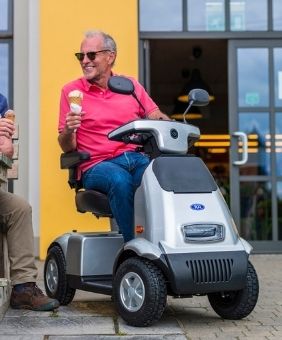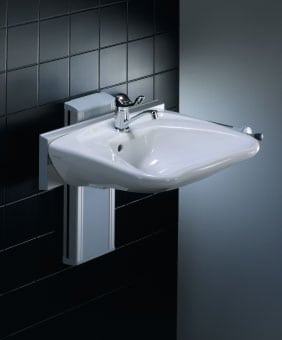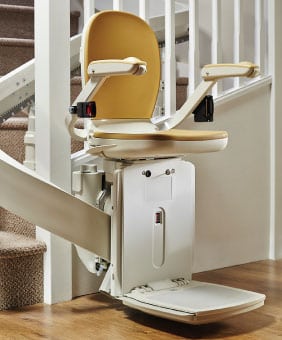Our tips for picking the best wheelchair
Whether you need a wheelchair for a few days or for the rest of your life, retaining the freedom of mobility is important, and can make a remarkable difference in your emotional, mental, and physical health. Wheelchairs can vastly improve quality of life by allowing you to continue to be active and do the things you enjoy.
Wheelchairs come in a wide range of styles and options to meet the needs of the highly diverse population who use them. The range of choice can seem overwhelming. So how exactly do you choose the right wheelchair for you? Well, let’s begin.
How to choose the right wheelchair
First things first; if you think you could benefit from a wheelchair all or most of the time, ask a GP, physiotherapist or occupational therapist to refer you to your local wheelchair service for an assessment. They’ll advise if you need a wheelchair and if so, what type. It is always a good idea to consult a healthcare professional to assist in the decision making process.
There are a number of factors to consider including your body type, skin condition, posture and strength. If you have a health condition that is likely to progress with time, it’s a good idea to take account of your possible future needs when choosing a wheelchair, too.
Things You Need To Know When Choosing A Wheelchair
Choosing the category of wheelchair that suits you
The first decision to make is what type of wheelchair you need. This is determined by the support and usability when you are in the chair, how much time in a day you spend in the wheelchair, and the lifestyle you lead. We group wheelchairs into the following categories;
• Standard wheelchairs
For occasional use. Basic seating, durable rigid frame and long-lasting support.
• Medium-Active wheelchairs
Semi prescriptive, and lighter weight. Configurable to suit the body and posture of the user.
• Active wheelchairs
Suitable for users with an active lifestyle, who enjoy playing sports and need an ultra lightweight frame.
• Comfort wheelchairs
Suitable for less mobile or more frail users, who will spend most of their day in the wheelchair.
• Bariatric wheelchairs
Heavy duty and extra wide wheelchairs that have higher weight capacities for larger users.
• Paediatric wheelchairs
Children’s wheelchairs that have the adjustability to increase in size to meet the needs of growing children.
• Standing wheelchairs
Standing wheelchairs allow users to safely transition from a seated to standing position. There are mental and physical health benefits of standing becoming a part of the wheelchair user’s everyday life.
How to choose which category of wheelchair suits you
Start with a thorough review of what you want to do with the wheelchair. We can break these down into a number of topics;
Will you be able to power the movement of the wheelchair yourself?
Will you be able to propel the wheelchair yourself? If yes, then a self-propelled wheelchair allow you to propel the wheelchair independently, by gripping the wheel area and pushing in the direction you wish to go. For users who possess a good amount of upper body strength, or are only limited in mobility from the waist down, a manual wheelchair can be a great choice. A manual wheelchair can help the user retain upper body muscle strength and allow you to play an active role in your mobility.
Will you require assistance in moving the wheelchair?
If you aren’t able to propel the wheelchair yourself, you can choose an attendant-propelled wheelchair. These have handles and brakes for the attendant who will be pushing the wheelchair for you. For wheelchair users who require an attendant to push their wheelchair 100-percent of the time, then it is not necessary to have large wheels that the user can reach, and smaller rear wheels will suffice.
A powered electric wheelchair is a versatile mobility vehicle designed to get you around safely and comfortably, both indoors and outdoors. These can be a fantastic solution for users who cannot wheel themselves, who spend a significant amount of time in a wheelchair and are unable to transfer in and out of the chair easily.
A manual wheelchair can become a power-assisted wheelchair with the help of a power add-ons. These clever devices that can be retrofitted to existing wheelchairs – to provide an electric power drive to propel the wheelchair. These can be really helpful to enable travelling longer distances or up steep slopes. Sync living supply wheelchair power add-ons from Unawheel, SMOOV, TGA and more. View wheelchair power add-ons here.
Do you need your wheelchair to be portable and folding?
So far we’ve covered elements to think about when the user is in the wheelchair. Now we need to think about when the user isn’t sitting in the wheelchair. Does it need to be portable? Will you, a family member, or carer need to move the wheelchair around?
This will determine the weight and portability you need from your wheelchair.
The easiest wheelchairs to move around are folding, lightweight chairs. These can be folded down, and will fit into the boot of a medium sized car. It is possible to lift lightweight folding into vehicles, and up steps, without the use of ramps. If you will need to transport wheelchairs up and down stairs, between locations, or stow them away in smaller storage areas; then a foldable wheelchair is for you.
Although powered electric wheelchairs are extremely easy to use, and make movement effortless for the user – they weigh a lot. So powered chairs are not very portable when the user isn’t in the chair. If you need to transport a powered chair, or a rigid frame wheelchair – then you will need a larger wheelchair accessible vehicle, with either ramps or a lift for access. They are extremely difficult and cumbersome to lift – and lifting is absolutely not advised.
What terrain will you be going over in your wheelchair?
A key consideration when choosing a wheelchair, is what surfaces you predict you will be travelling over. Will you be staying to flat, smooth pavements? Or is the area around your home steep, with loose gravel, and prone to high rainfall (In Northern Ireland? Never!).
This will determine the size of the wheels, and level of grip and tread in the tyres that you will want to choose. There are also wheelchair tyres that have a much larger surface areas – which are ideal for travelling in wet and boggy conditions, or even on sandy beaches.
For those that really enjoy adventuring off road – All terrain wheelchairs can help you overcome many obstacles and limitations. These wheelchairs are specifically designed for extreme outdoor use, and can be used on more technical surfaces such as snow and rock. You will want to choose a wheelchair frame that is built of lighter weight and stronger material – such as aluminium and titanium alloy. Suspension is also available – a feature that is great for user comfort when venturing ‘off-piste’.
Setting your wheelchair seat height with transfers in mind
Consider the wheelchair seat height, and how this will affect you transferring in and out of the wheelchair. If you cannot perform a standing transfer, then the wheelchair seat height (including cushion) should be similar to the height of destinations you commonly transfer to. This means the height of your toilet, sofa, armchair or bed. It is a lot easier to transfer across, than it is having to lift yourself up or down. This seemingly small detail, will save a lot of effort in the long run!
The importance of wheelchair seating and postural positioning
We all know the feeling. You visit the cinema, sit down in your seat, and think to yourself just how comfy you feel. But by the end of the two hour film, you find yourself fidgeting around in the seat, unable to replicate the comfort you found yourself enjoying at the start of the film.
Seating positioning is a crucial part of selecting a wheelchair, both for comfort and support.
The key to stability is a neutral pelvic position. This needs to be taken into account when fitting the seat positioning of a wheelchair. In a sitting position, the natural curves of the back and neck should be supported; and the shoulders, pelvis and knees should ideally be level. This does however depend on the individual needs of the user, and whether they have postural control – the ability to control their body position. The seat position also needs to sit over the wheelchair’s centre of gravity – just in front of the wheelchair’s rear wheels.
When seated for a long period of time, wheelchair users can also experience discomfort in the form of wheelchair skin conditions and pressure ulcers. Wheelchair cushions such as Stimulite contoured cushions, provide total pressure management. Stimulite cushions combat pressure injuries with their complete approach to pressure management. Pressure, shearing and maceration – softening of the skin due to heat and moisture – are the primary causes of pressure injuries. Stimulite cushions uniformly distribute pressure through their cellular matrix. The cells flux with movement to reduce shearing and are perforated to prevent heat build-up, and evaporate moisture. This keeps the user cool and dry, and helps prevent pressure sores. View our range of wheelchair seating here.
Tilt-in space wheelchairs offer pressure relief for users. They feature a tilting seat position, which helps to facilitate feeding and respiratory function, reduce pressure beneath the pelvis, and improve visual alignment by holding the head upright.
Consider your future needs, now
If your condition is expected to deteriorate, you may wish to choose a chair that can be adapted in the future. Such features could include support for arms, the head and neck, and postural support. This may also influence your decision on whether you choose a manual wheelchair, or a powered wheelchair.
Consider your body size when choosing a wheelchair
Wheelchairs come in a range of shapes and sizes – and it is essential that you choose a frame that suits your body type. Adjustable frames, seats, backrests, footrests and other features allow the chair to
If you sit outside the standard size range for adult wheelchairs, then bariatric wheelchairs offer larger size dimensions, and have higher weight capacities. Bariatric wheelchairs are designed for larger users.
If you are looking for a wheelchair for children, or smaller users; then paediatric wheelchairs are smaller in size. Although more compact, paediatric wheelchairs are rich in design features including lightweight frames, and modular adjustability to increase in size of the wheelchair, to meet the needs of growing children.
Giving your wheelchair a splash of personality
Want to make your wheelchair an extension of yourself? Your style, your personality, your rules.
Wheelchairs are available in a wide range of vibrant colours. Most wheelchairs come in a range of frame colour options, and some you can customise the colours of the wheels and spokes. Or if a minimalist look is more your thing – you can opt for low-key black or metallic option.
You can light up your path with light up castors and detachable LED lights. Wheelchair spoke guards attach to wheels, and are available with a range of different artwork. You can also try a completely personalised design, made to order.
Customising your seat and backrest material is another canvas in which you can display your style and personality.
Pricing – How expensive is a wheelchair?
Setting yourself a budget for your wheelchair is crucial. There are a range of chairs that fit into different budget categories – with standard “off the shelf” wheelchairs a cheaper option vs. customised wheelchairs.
To find cheaper wheelchair options, you can search online, or look at the more affordable entry models from manufacturers. Second hand market places such as eBay and Gumtree are also great for finding a bargain. Here you will be able to find used wheelchairs that may still be in good condition – but make sure to do your research!
Here at Sync Living, we supply a wide range of new wheelchairs from manufacturers, across various price points. Our team of experts can provide custom seat fitting for optimal postural support; and our engineers are all fully trained and on hand to service, maintain or repair your wheelchair. We strive to provide all of our customers with the highest level of service.
If you are interested in financial assistance options – then read our finance guide. This covers disability allowances, VAT exemption, and finance companies offering payment plans.
Thanks for reading our guide! If you still have any questions or queries – then please don’t hesitate to phone or drop us a message. Our team will be more than happy to help
————-
Wheelchairs For Sale Northern Ireland
So there you have it! Our top tips for choosing the right wheelchair.
Sync Living offer an excellent range of high quality mobility equipment designed to enhance independent lifestyles. We are based in Belfast, Northern Ireland – and serve customers nationwide and across the Republic of Ireland, too. We pride ourselves on our commitment to provide a professional and speedy service at all times, whilst maintaining the highest quality of work.
We supply wheelchairs from leading brands;
• Invacare wheelchairs
• Pride Mobility wheelchairs
• TiLite wheelchairs
• Karma wheelchairs
• LEVO standing wheelchairs
• Dietz wheelchairs
• Kymco wheelchairs
• Apex wheelchairs
• Ki Mobility wheelchairs
• Hoggi wheelchairs
Wheelchair ramps to make your home accessible
What are the most important things to bear in mind when buying a wheelchair ramp for your house? Never fear – we have a guide for that! If you enjoyed these tips for choosing the right wheelchair, then read our guide to wheelchair ramps now!





